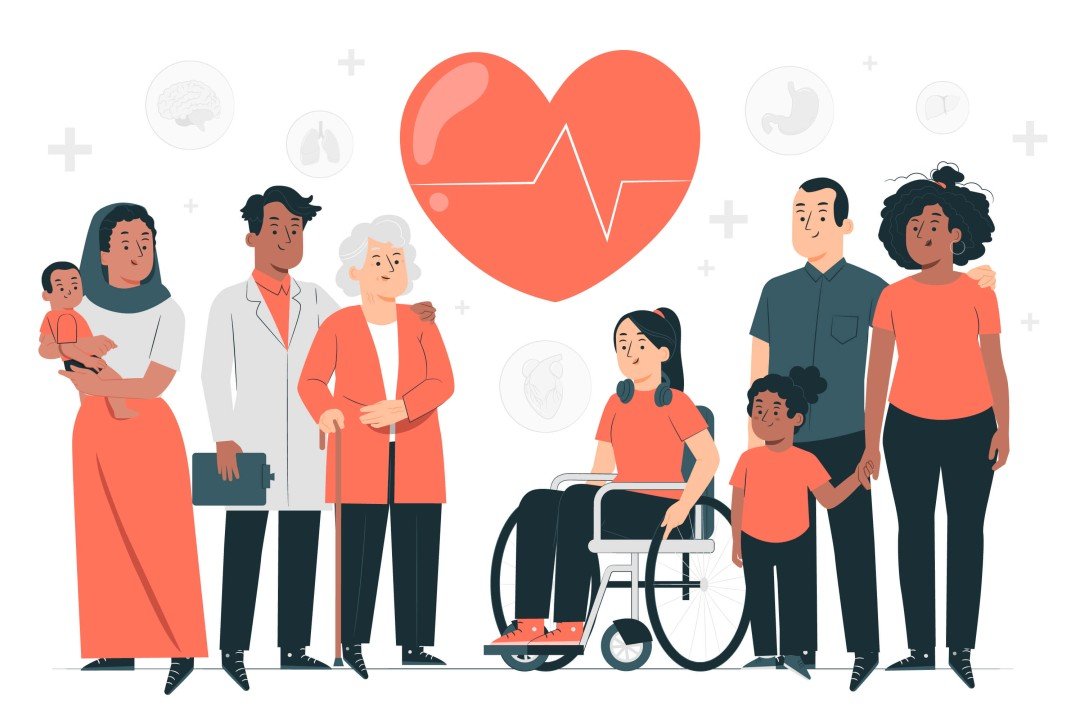Pot noodles are like fast food and have found their place in the list of easy-to-make quick snacks for those who do not want to run into a dilemma when you put a question up, what is there to eat calm response comes from your kitchen. And because of their affordability and quick prep time, they are amazingly hit among students, office workers, or anyone who merely needs a speedy meal. But the question is: Are pot noodles good for your health? This post takes a closer look at the nutrition of pot noodles, what eating these sorts of meals regularly could mean for your health, and if they can form part of a healthy diet.
What Are Pot Noodles?

Pot noodles are a variation of instant noodles that come prepacked in disposable cups or pots, with dried (3) flavored powder and an oily sauce. Just add hot water and in a few minutes, you have got your meal ready. It’s a simple concept, but it’s quick and easy to eat on the go for many which is why pot noodles were so popular.
1. Nutrition Pot Noodles
To determine whether pot noodles are healthy, the first thing you need to know is their nutritional content. While the specifics of what a pot noodle is made up of can be different depending on brand and flavor, pot noodles tend to have some common nutritional qualities.
2. Calories and Macronutrients
One serving of pot noodles can provide anywhere between 300 to 500 calories (depending upon the portion size and added ingredients). This calorie content means pot noodles are one of the lowest calories-per-serving meal options, at least if you ignore that practically all these calories come from carbs and fats
- Carbohydrates: Pot noodles are made from chiefly refined wheat flour, which is high in the simple form of carbs. A single serving has between 40-60g of carbs, the majority of sugars and starches.
- Fats: Pot noodles usually contain 10-15 grams of fat. These are sometimes saturated but in a few instances, unsaturated ones as well. Brands may include palm oil or hydrogenated oils (higher in unhealthy Tran’s fats)
- Proteins: These are quite low in noodles, and have usually 5 to 10 grams of content per serving. This dose is not enough to cover the daily protein needs of most adults, but as described earlier this singular meal would be macronutrient incomplete at best.
3. Sodium Content
Pot Noodles contain one more alarming trait than most, the already super-high sodium scores. One serving can have as many as 1,500 milligrams worth — more than half the recommended daily value for your average adult! Too much sodium could be bad for your health, as it’s associated with high blood pressure and heart disease as well as kidney issues.
4. Additives and Preservatives
Pot noodles typically have lots of other additives and preservatives to improve the flavor and give them a longer shelf life. Those can include aspartame, colorant, and colorings. The addition of these chemicals is historically considered safe in smaller doses, but their long-term health safety inference remains a subject under study.
The Health Consequences of Eating Pot Noodles Regularly

Due to the nutrition of what is in a pot noodle, eating it regularly can have various health consequences. Given the above, is it fair to say that pot noodles are healthy?
1. Impact on Weight Management
Pot Noodles are not only low in calories, they’re also deficient in nutrients. For this reason, they are not best for people who want to eat a healthy diet. Consuming such a high volume of carbohydrates, especially from refined sugars and starches may result in rises in blood sugar followed by crashes which can lead to excessive hunger throughout the day. Over time, this could contribute to obesity and the emergence of metabolic diseases such as type 2 diabetes.
2. Cardiovascular Health
This is a very worrying factor for heart health, as the sodium content of pot noodles runs high. Diets high in sodium can elevate blood pressure levels, a leading risk factor for heart attack and stroke. Moreover, the unhealthy fats appear to include trans-fat which is very closely linked with atherosclerosis where arteries harden and clog.
3. Nutrient Deficiencies
Pot noodles are often lacking in vitamins, minerals, and fiber. Low in vitamins A, C, and D as well as iron. Pot Noodles are not to be relied upon for necessary nutrients such as vitamin B12. These deficiencies can cause a poor immune system, leading to weak and brittle bones or something graver down the line.
Any Healthier Options Out There?
The old-fashioned pot noodle might not be the healthiest meal, but here how you can make this handy food choice a better one. Here are some things worth considering.
1. Choose whole-grain or rice noodles
A few brands make these instant pot noodles from whole grain wheat or brown rice which are rich in fiber and can also be lower on glycemic index. They stabilize blood sugar and help control hunger, helping to prevent overeating.
2. Use fresh vegetables and healthy proteins

If you add some fresh vegetables and maybe a little lean protein such as poached chicken or tofu into your pot noodles, this will make the dish considerably more nutritious. Ingredients such as spinach, broccoli, carrots, or tofu are simply thrown into the pot to bring a little bit of essential vitamins, minerals, and fiber that cannot be found in your regular store-bought instant noodles.
3. Select Low-Sodium or No-Salt Varieties
A few of the pot noodle brands contain low-sodium, or worse still no salt versions which helps to mitigate against high blood volumes and other related health issues. You can also modify how much flavoring powder you use (such as using a bit less than 1/3 packet) to limit sodium.
4. Homemade Instant Noodles
Do you like how easy it is to devour a pot noodle but dislike the low nutritional value, have some homemade instant noodles instead. If you like pasta, make whole-grain noodles ahead of time and portion them into containers with your favorite veggies and protein. To eat it merely pour in some hot water or broth and have a healthier, make-at-home version of pot noodles. Its likely fine to enjoy them occasionally, but consuming them excessively or as a primary food source could lead to nutritional imbalances and health issues over time.
Pot Noodles and a Healthy Diet
They are not healthy food, but they do form part of an overall diet. The trick is not to make them your main origin of food and choose from around the borderlines, including fruits, vegetables, whole grains (and goods), and lean protein in combination with other options.
1. Moderation Is Key
As with any convenience food, moderation is crucial when it comes to pot noodles. If you enjoy them occasionally, they are unlikely to have a significant negative impact on your health. However, consuming them regularly or as a primary meal source can lead to nutritional imbalances and health issues over time.
2. Pair with Nutrient Dense Foods
As pot noodles need nutrients, incorporate them with other nutrient-dense foods. For example, you might have pot noodles over a bed of salad or with some steamed veggies on the side. Doing this can still allow you to eat pot noodles, but also ensure that your diet is balanced.
3. Know what you need to eat.
Until we accept that what eats one is poison to some and then move from there, it will remain yet another diet craze! If you have dietary restrictions or medical issues, try not to eat pot noodles, and consult with a nutritional expert.
How Pot Noodles Are an Environmental Disaster

Not only for health, we have to consider the environmental costs of pot noodles as well. The problem is the packaging of non-biodegradable components, like plastic ones (See How much do you know about plastics?), if these are to reach watercourses added waste contaminating bodies and ecosystems.
1. Reducing Waste
Start thinking about ways to hew on waste if you are a regular pot noodle consumer. For instance, some brands offer pot noodles that can be recycled or broken down when discarded. Alternatively, you could choose larger, multi-serve pots with less waste than single-serve cups.
2. Sustainable Choices
As a result of an increasingly eco-aware consumer, some companies offer more sustainable options within easy unhealthy dishes like pot noodles. Select brands that value sustainable packaging practices and ethically sourced ingredients as well as those who are making strides to reduce their carbon footprint.
Conclusion:
So, although pot noodles are quick and easy they are also quite unhealthy. They are high in sodium, low in nutrients, and contain harmful fats; hence they should not be eaten regularly. That said, with a few better choices and some moderation pot noodles can be part of your healthy balanced diet.
The next time you eat pot noodles, Choose whole-grain noodles and add fresh vegetables and lean proteins instead of the processed pieces; then pick low-sodium options to make it less bad. Aware of the environmental impact some pot noodles have, there has to be a demand for more sustainable options out there as we move towards healthier and eco-friendly living.
So, the answer to whether pot noodles are good or bad for you is that it always depends on how much and what other foods they have in your diet. When you eat in a style that glorifies convenience, food companies capitalize on your habits by using cheap ingredients and then changing their formula every few years to not register a high toxic level of any single substance to keep you coming back for more — resulting in frail bodies.

























